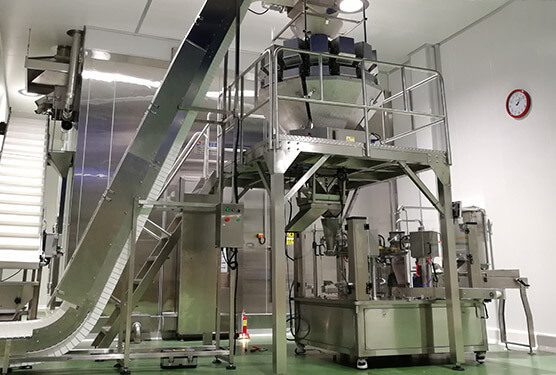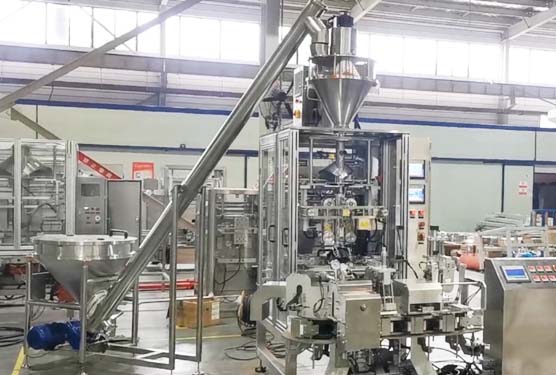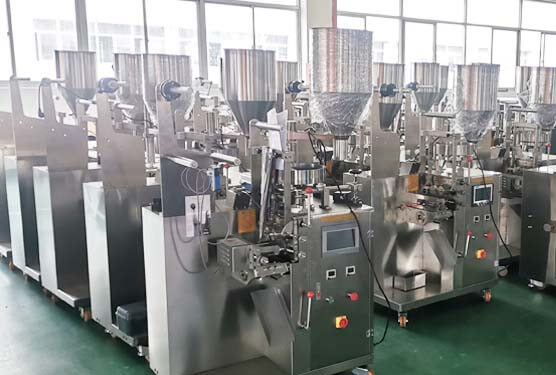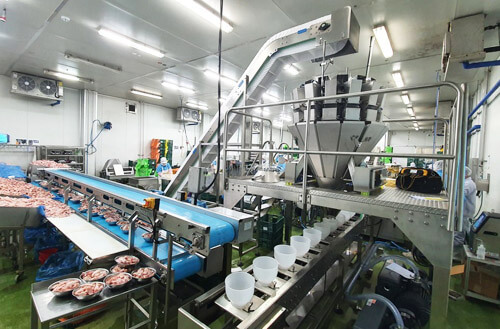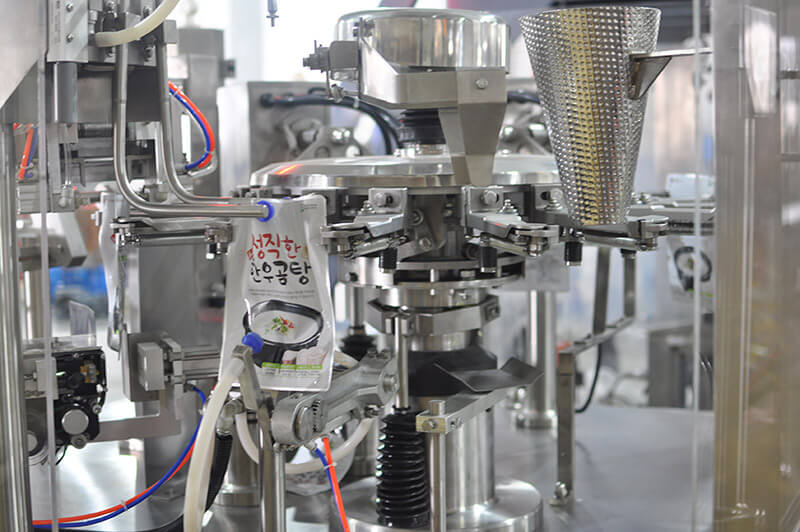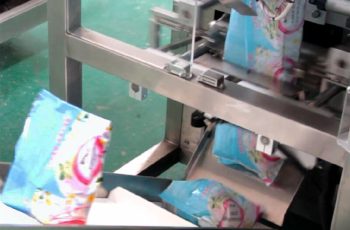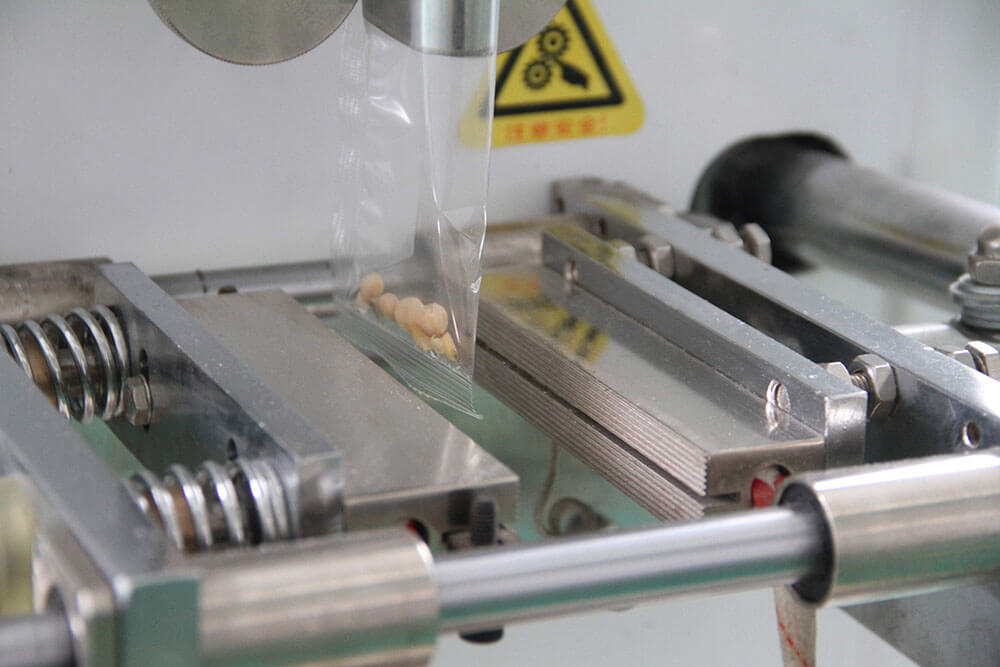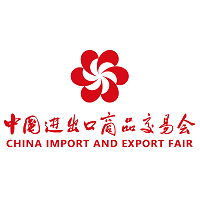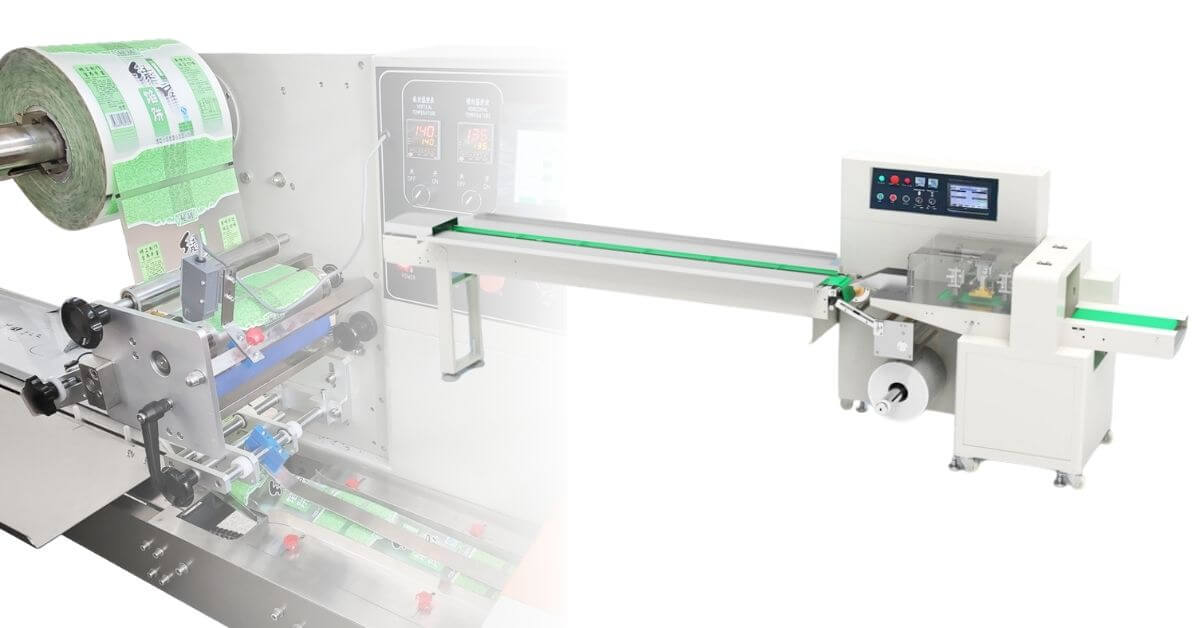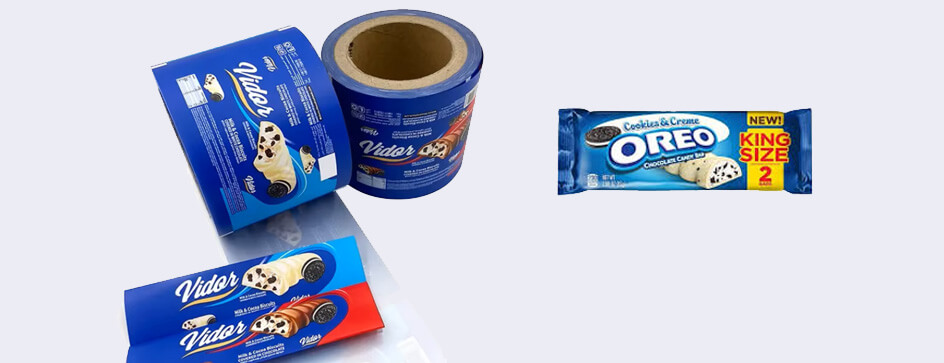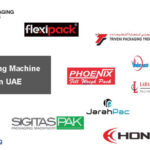Horizontal flow wrappers are multifunctional packaging systems. The whole process runs constantly until you cut and seal the pack. It is cost-effective and saves you time.
In this article, I will mention every detail about horizontal flow wrappers, from their features to troubleshooting ideas. Let’s dive straight to the point-
What Is Flow Wrapping?
This is a packing system where the product is placed on a conveyor belt, which moves it horizontally through a machine that wraps the film around it and seals the ends. This method is commonly used for food items, electronics, and pharmaceuticals.
Besides, the typical kind of flow wrapper is horizontal. It is also known as crimp seal wrapping, horizontal bagging, fin seal wrapping, etc.
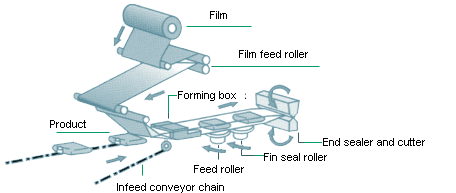
Key Features Of Horizontal Flow Wrapper
In this section, I will describe some of the main factors of horizontal flow wrappers-
Adjustable settings: Often, horizontal flow wrappers come with adjustable settings like conveyor speed, bag length customization, and sealing temperature. For this, you can make the product changeovers quickly.
User-friendly interface: A control panel with transparent screens and simple-to-use menus makes the machine easier to operate. So, you can cut down on training time for operators. It’s best to select machines with touchscreen displays and the option to save preset settings for products that are often packaged.
Reliable sealing system: Horizontal flow wrapping comes with high-quality sealing capacity. So that you can make an airtight seal.
Compatibility with various film types: Some machines come with cold and heat seal capacities to work with different kinds of film. Also, these films can be compostable and biodegradable. If you have a large factory with varying types of products, it’s best to choose these types of flow wrapper films. As a result, you will get excellent flexibility while packaging products.
Safety features: Safety is the most essential thing while running a horizontal wrapper. These machines have many safety factors, such as interlock doors, stop buttons, and many more.
Modular design: These machines have a modular design to help you easily access the equipment. So that you can quickly troubleshoot, maintain, and clean the machine without hassle.
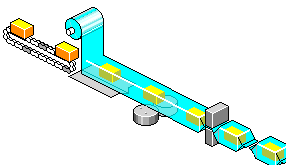
Advantages Of Horizontal Flow Wrapper
Horizontal wrapper has several benefits that make your packaging process easy and quick. Including-
- High speed and efficiency: The horizontal flow wrapper machine can make hundreds of packs each minute. So you can enhance production capacity without spending too much money on labor.
- Tight, secure seals: They have an air-tight sealing system and can save the contents from contaminants and oxygen. Also, flow wrapping can keep the products fresh and increase shelf life while stored.
- Versatility: These machines can work with several product shapes, sizes, and kinds, for instance, electronic items, sandwiches, and even small chocolates. Also, flow wrappers control many film surfaces, such as cold sealable, heat sealable, biodegradable, and many more.
- Attractive packaging: With flow wrapping, you can make clean and standard packages like window pouches. So the packages will be clear and can be printed whatever you want, like brand or product information. Always have eye-catching options to attract customers.
- Cost-effectiveness: If you work with horizontal flow wrapping, you can save on costs. For example, you can reduce material waste than other packaging. Also, they are efficient and minimize labor and power consumption.
Application Of Horizontal Flow Wrapper
Whether you work in the food or chemical industry, you can use these wrappers for a wide range of products. Check them out below-
- Confectioneries: From truffles to chocolate bars and gummies, you can wrap them with flow-wrapping devices. They extend the shelf life of the products and keep them fresh.
- Food: Baked products like rolls, bread, cookies, and several snacks like cookies and chips you can pack with horizontal flow wrap. At the same time, fresh content like vegetables and frozen items like ready-made foods, as well as ice cream, are also important.
- Medical Tools: Medical equipment and drugs are often packed using flow wrap machines. This way, the product will be kept safe and of good quality.
- Cosmetics: Many cosmetic items like soaps, shampoo packs, lipsticks, face creams, and more can be packed with flow wrapping. This way, the horizontal flow wrapper ensures the products remain intact until consumers use them.
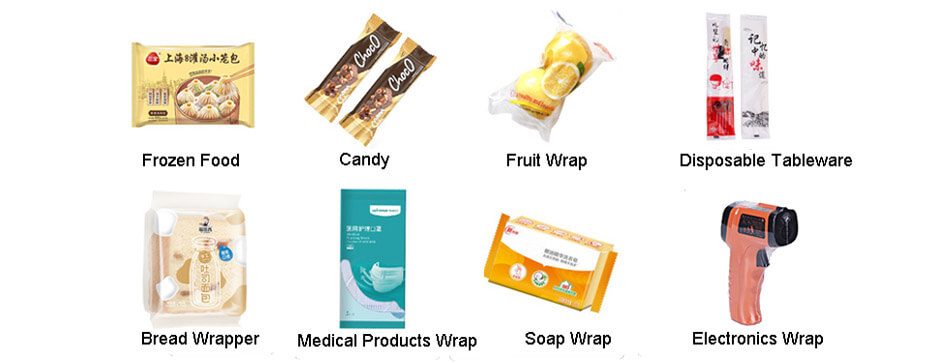
Suitable Packaging Design Used For Flow Wrapping
Single-Unit Packaging: You can pack single-unit items like bread buns, candy, and toys with flow wrapping. This format ensures that each item is encased in a protective and visually appealing package.
Multi-Pack Packaging: Used to group multiple items together while maintaining their integrity. This is frequently seen in the food industry with products like snack bars or cookies.
Pillow Pouch Packaging: With the following wrapper, you can make pillow pouches. These pouches are easy to open and use. Also, they can stand upright and attract customers to the shop.
Gusseted Pouch Packaging: Again, gusseted pouch packaging can be made by a flow wrapping machine. These bags are large in size and can hold items like biscuits, lunchboxes, soaps, and more.
Perforated Tear Strips: If you want to make simple-to-use bags for customer convenience, try to create perforated tear strips with flow wrapping. It comes with user-friendly features. Therefore, you can pack items like tissue boxes with them.
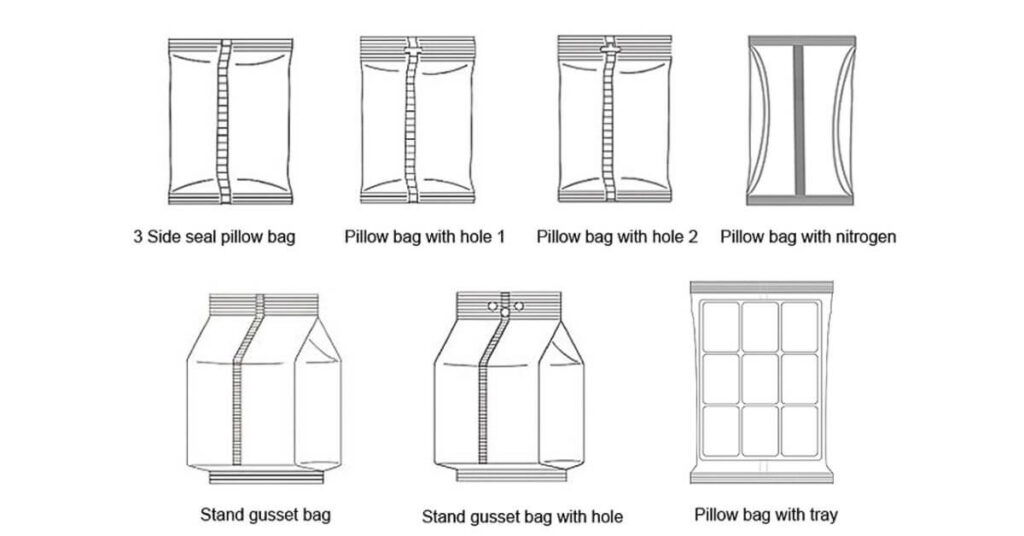
Types Of Horizontal Flow Wrapping Machines
The two main types of horizontal flow wrapping machines are automatic and semi-automatic machines.
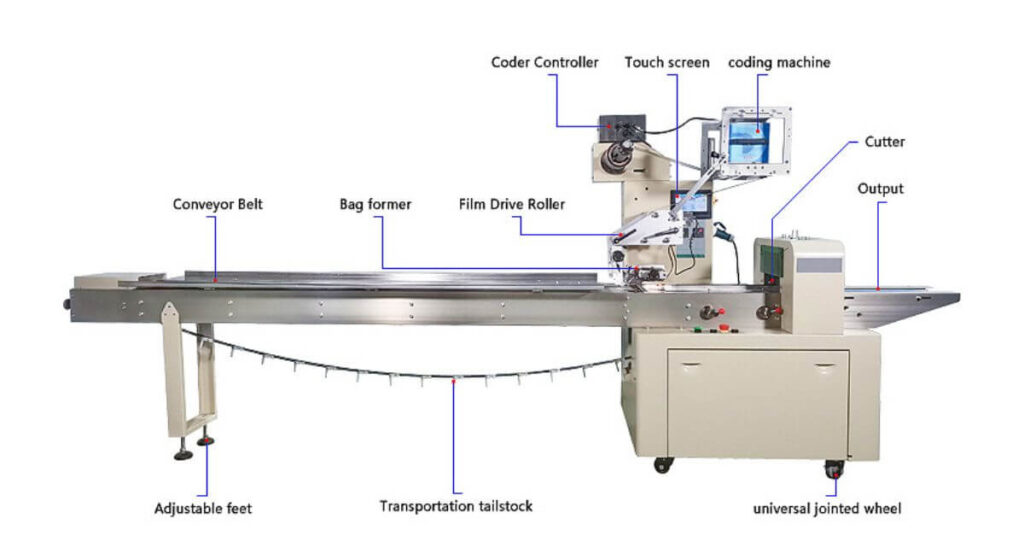
- Automatic Horizontal Flow Wrappers
This type of horizontal flow wrap machine operates automatically and increases production capacity. If you have a large factory, you should use the automatic machine. The machine can get production from either a vibratory feeder or hopper. However, automatic machines are costly compared to semi-automatic machines.
- Semi-Automatic Horizontal Flow Wrappers
If you have a medium to small business, use semi-automatic flow wrappers. Usually, they run manually and need an operator to put the product into the infeed conveyor. Besides, semi-automatic machines do not need any extra money for automation instruments. Therefore, they are cost-effective.
How Flow Wrap Machines Work?
Flow wrap machine follows a step-by-step process, from unwinding the film to cutting the package. Let’s see the whole process here-
- Film unwinding: First of all, a film roll is unwound and placed into the flow wrap machines.
- Product loading: Now, you can put products into the conveyor automatically or manually. Then, the conveyor transports the items to the machine’s forming area, where they are prepared for wrapping.
- Film forming: In this stage, the film forms into a bag shape. The pouch size and design depend on you and the machines.
- Sealing: Flow wrappers machine has different types of sealing, such as pressure and heat sealing. First, they seal the tube length and seal the end part.
- Cutting: These machines cut the wrapped products with a rotary knife. Specifically, they separate the individual packages from the continuous film,
- Product discharge: Finally, machines release the products for further processing discharge conveyor. Advanced machines can also include features like gas flushing to extend shelf life or printing capabilities for branding.
What Types Of Materials Used In Flow Wrapping Machines?
Flow wrapping machines use various materials based on product needs and industry requirements. For instance-
- Polyethylene (PE): This is one of the most commonly used materials used in flow wrappers. It can easily be converted into several shapes, like cartons, boxes, and more. Besides, its glossy and transparent look makes it attractive in the store.
- Polypropylene (PP): This material is a thermoplastic polymer. You can use PP to pack perishable food items and medicine.
- Metalized film: Metalised film is mostly used in food packaging. They are metal-coated polymer films and can save food from moisture and oxygen.
- Polyethylene terephthalate(PET): This is also a kind of polyester thermoplastic. It is a strong and lightweight material. Hence, you can use it for horizontal as well as other types of wrapping.
- Paper-Based Materials: Paper is the most eco-friendly material you can use for flow wrapping. This way, you can make a good impression on consumers and build trust.
- Compostable Films: This is a combination of many layers of materials like PE, PET, and PP. Basically, it increases product safety and durability.
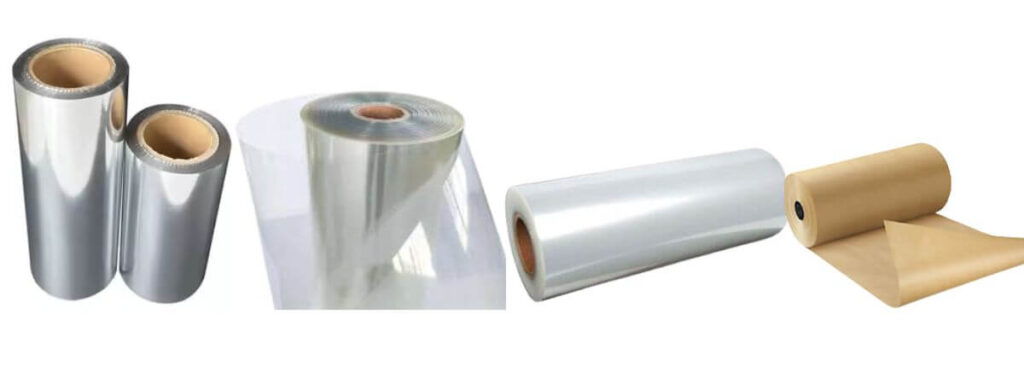
Difference Between Flow Wrapping vs Shrink Wrapping
| Features | Flow wrapping | Shrink wrapping |
| Process | The product is wrapped in film that is sealed and cut into individual packages | It means the product is covered with shrink film and heated, causing it to shrink and conform to the product |
| Film Type | Continuous plastic, paper, etc | Shrinkable plastic film (PVC, polyolefin, or polyethylene) |
| Speed | Typically faster and used for high-speed production lines | Slower, due to the heating process, often used in smaller-scale operations |
| Protection | Provides a tight seal around the product, protecting it from contamination | Provides strong protection from dust, moisture, and tampering |
| Applications | Food items (candy bars, biscuits), medical products, and hardware | Bulk packaging, pallets, bottles, and irregularly shaped items |
| Cost | Generally cost-effective for high-volume packaging | Costs can be higher as the heating process and shrink film material |
Troubleshooting Of The Flow Wrapping Horizontal Bagging
There are many common issues you can face while running horizontal wrappers. I have included a few of them here; take a look-
- Product Stuck: Often, products are stuck in the feeding unit which is annoying.
Solution: To solve this issue, you should check the product movement and film length in the unit.
- Jammed Film: This is another common problem you can face while running flow wrappers. Well, the film can be jammed when feeding if not placed accurately.
Solution: To fix this, use high-quality film, regularly inspect the machine’s tension, and ensure it is tight.
- Unreliable Sealing: This means the sealing often can’t done properly. This can ruin product and shelf life.
Solution: You can properly use the sealing process by ensuring heat setting.
- Product Damage: Problems such as incorrect speed limit and fault loading can cause damage to the products.
Solution: Examine the machine speed level and loading capacity to fix this.
- The film is not feeding properly: Often, the film does not operate in a proper way, so this problem arises.
Solution: Therefore, when you face this issue, look for the film and check if it runs correctly.
- Unwrapped Products: This is a common issue you can face while running a horizontal flow wrapper.
Solution: Check if there is any wear and tear or any broken equipment. Also, keep the machine clean and ensure the products are loaded perfectly to avoid this issue.
Conclusion
Horizontal flow wrappers are the perfect way to upgrade and boost your production process. Therefore, you can use them for multiple products, like medicine, food, cosmetics, and many more. From paper-based to polyethylene, they can work with many materials packaging. As there are automatic and semi-automatic wrapping machines available, choose one based on your production needs.
FAQs
What is the Difference Between Flow Wrap and Overwrap?
Flow wrap is a packaging technique where a product is wrapped in a continuous plastic film, sealed on three sides. On the other hand, overwrap covers products using a flat film, folded and sealed at the ends. Specifically, flow wrap is faster and used for individual items, while overwrap is often used for bundles.

